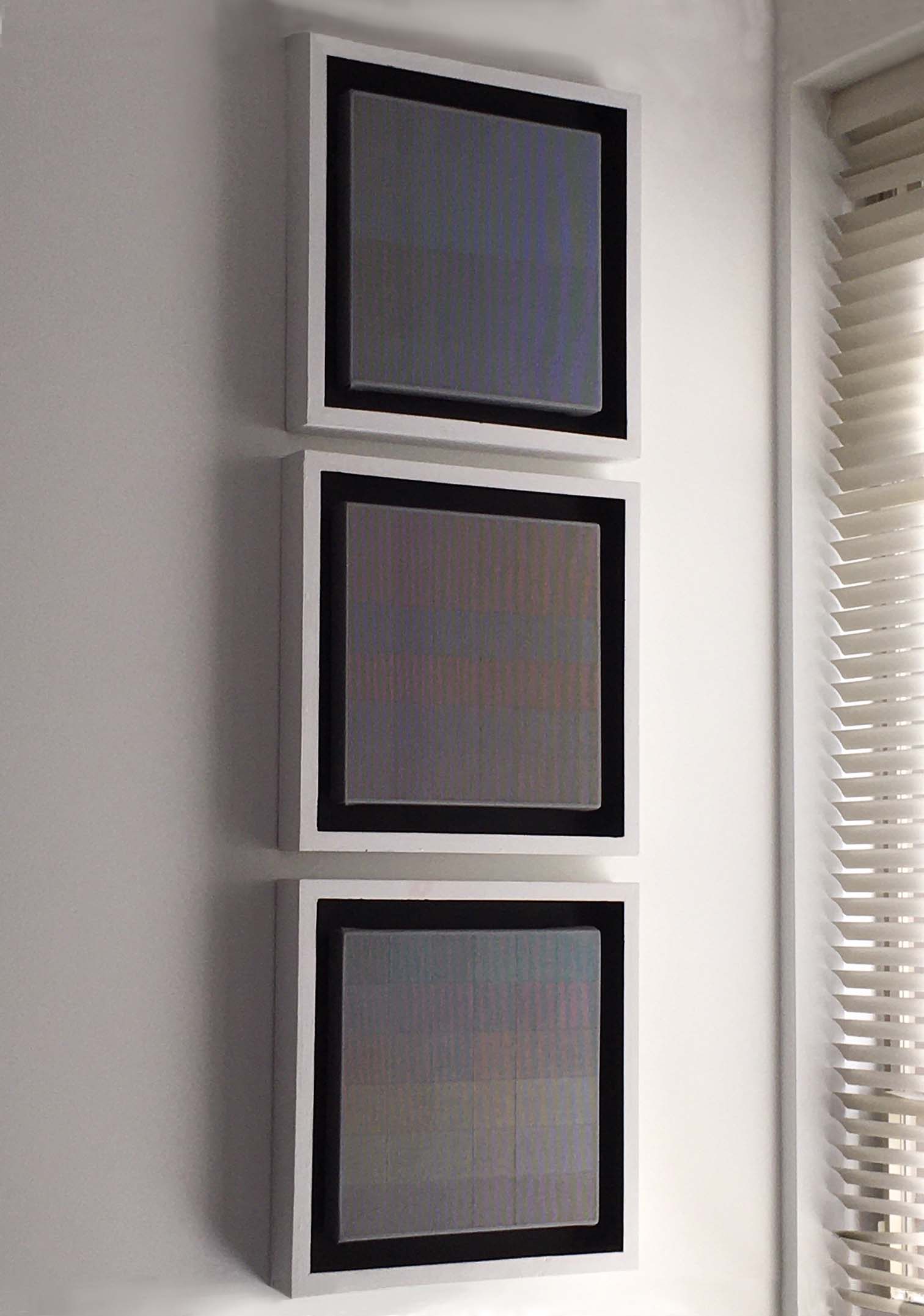This Post introduces Chapter 23 of my book “Painting with Light and Colour”. It is the second of three chapters that concentrate on “viewing conditions”. Because all three are concerned with issues arising from my own science-influenced researches, you are almost certain to find a lot that is new to you. To give you a bit of a foretaste of what to expect, I have included below a slightly edited a reprise of its “Introductory”. It follows the link to a .PDf version of the chapter.
![]()
CHAPTER 23 – MORE ON VIEWING CONDITIONS
Reprise of Introductory
This chapter continues the story of how my interest in thin lines led to previously unknown, or little explored, ways in which viewing conditions can affect the pictorial dynamics of paintings. Sometimes the changes they bring about are dramatic. At others, they can be extremely subtle or even virtually invisible. Those that influnce the way we experience paintings can be well worth taking into account.
![]()
Three paintings that give viewing conditions a dynamic role

Other Chapters from BOOK 2 of “Painting with Colour and Light”
- Chapter 19 – Colour and the feelings
- Chapter 20 – Optical mixing and its legacy
- Chapter 21 – Colour contrast effects
- Chapter 22 – Thin Lines
- Chapter 23 – More on viewing-conditions
Chapters from BOOK 1 of “Painting with Colour and Light”
- Introduction: the little known Science behind the many innovative practical suggestions.
- Chapter 1 : The dogmas
- Chapter 2 : Doubts
- Chapter 3 : The nature of painting
- Chapter 4: Renaissance ideas
- Chapter 5 : New Science on offer
- Chapter 6 : Early Modernist Painters
- Chapter 7 : The perception of surface
- Chapter 8 : Seurat and Painting with Light
- Chapter 9 : Seeing Light
- Chapter 10 : Illusory pictorial space and light
- Chapter 11 : Colour mixing – definitions and misconceptions
- Chapter 12: The colour circle: Misunderstandings
- Chapter 13 : Finding a maximum of colours
- Chapter 14 – Colour mixing made easy
- Chapter 15 – Colour mixing by layering
- Chapter 16 – Reviewing previous chapters (1)
- Chapter 17 – Reviewing previous chapters (2)
- Chapter 18 – “All you need to know about painting”-2
Other Posts on colour and light in painting:
- What are colourists? (1): Some of the many meanings of the word
- What are colourists? (2): Difference between meaning of the word for Venetian Colourists and for Modernist Colourists?
- What does the word “colour” mean?
Go to top of page
Go to list of all other contents
![]()
Thanks, Francis for sharing these images and insights, this chapter is a fascinating combination of art, science, and biography. It’s very interesting to read how you approached this endeavor using the scientific method and moving to realize the huge investment these paintings required. And what great results!
This is a series of yours that I haven’t seen in real life. However they look amazing even on a screen, and I’m confident from seeing your striped cubes, that in reality, they would be spectacularly beautiful. I remember the cubes glowing, without exaggeration, like the element of an electric heater. I do hope these works are well looked after as they deserve greater appreciation. They are an important contribution to the Op art movement and deserve to be seen alongside Riley and the others. And they won’t give the viewer a migraine!
I find it interesting, encouraging, and moving that you’ve managed to create work of this significance on a tiny scale. Wheres, in general, many of the Op Artists worked big to fill the visual field; you’ve achieved meaningful beauty and a significant contribution to this field of painting, with work that is modest enough to be seen in a home rather than requiring a large museum space.
Having considered the painting surface so carefully I would be interested to know how you decided to frame the work. It’s interesting that you did go down that route, and that must have implications for how the work appears, particularly the edge-background interactions occurring around the dark portion of the floating frame.
Thanks Mark, for looking at my paintings so sensitively and thoughtfully. Although I always paint for myself, it is very gratifying when someone is able to get so much out of them as you seem to have done. You ask about the framing. The unframed painting was bought by someone in New York. He wrote to say that it had arrived safely. He told me how very pleased he was with it, but felt it should have a frame. He left the design up to his framer, who came up with a box frame almost exactly like the one you ask about, except it was made using some kind of metal (perhaps aluminium) and was lined with black velvet. As a way of finding out what I thought of it, he sent me a photo. I immediately saw how well it fitted my sense of my painting, except that I wasn’t too keen on the metal. Fortunately, at the time, I had my Post at the University of Stirling and, accordingly, access to the impressive skills of the University technicians. I asked if they could make a wooden version of the frame in the photograph and they said they could. I was inordinately pleased with what they produced. In all this, my only contribution to the whole process was to paint it black on the inside (probably black velvet would have been slightly better) and white on the outside. As I could not imagine a better outcome, I ordered similar frames for all the other stripy paintings of which I eventually made fifty or so.